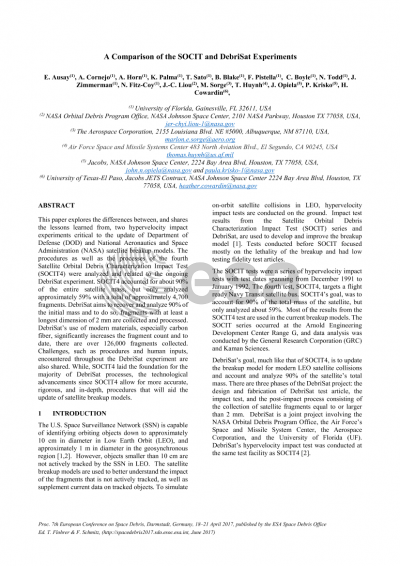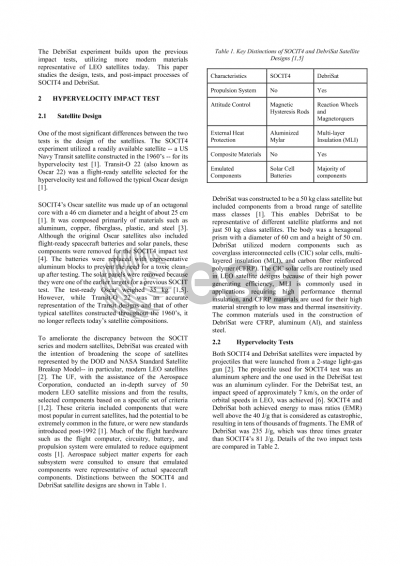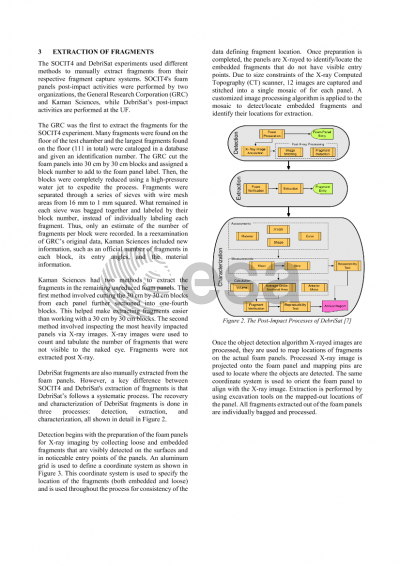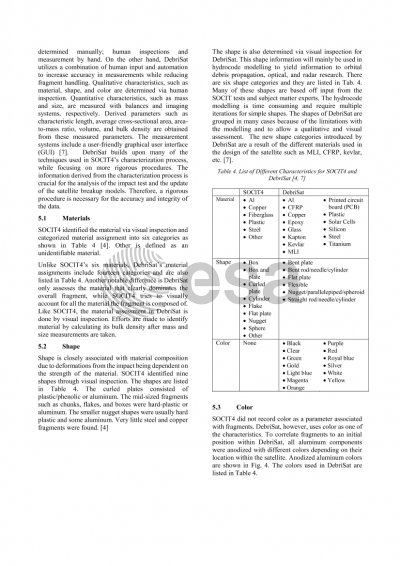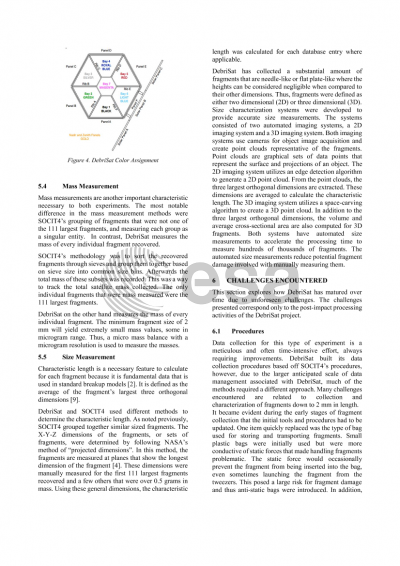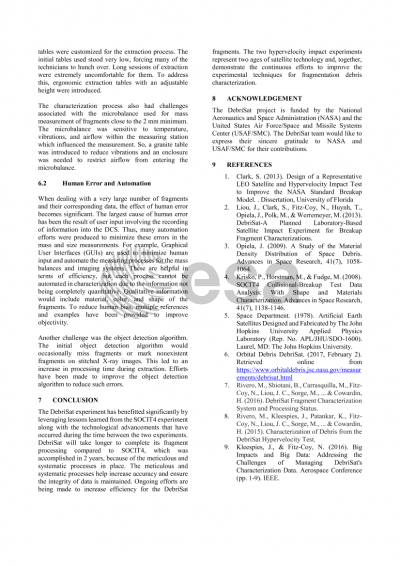Document details

Abstract
This paper explores the differences between, and shares the lessons learned from, two hypervelocity impact experiments critical to the update of orbital debris environment models. The procedures and processes of the fourth Satellite Orbital Debris Characterization Impact Test (SOCIT) were analyzed and related to the ongoing DebriSat experiment. SOCIT was the first hypervelocity impact test designed specifically for satellites in Low Earth Orbit (LEO). It targeted a 1960’s U.S. Navy satellite, from which data was obtained to update pre-existing NASA and DoD breakup models. DebriSat is a comprehensive update to these satellite breakup models— necessary since the material composition and design of satellites have evolved from the time of SOCIT. Specifically, DebriSat utilized carbon fiber and MLI (Multi-layer Insulation), two materials not commonly used in satellites during the construction of the US Navy Transit satellite used in SOCIT.
Although DebriSat is an ongoing activity, multiple points of difference are drawn between the two projects. Significantly, the hypervelocity tests were conducted with two distinct satellite models and test configurations, including projectile and chamber layout. While both hypervelocity tests utilized soft catch systems to minimize fragment damage to its post-impact shape, SOCIT only covered 65% of the projected area surrounding the satellite, whereas, DebriSat was completely surrounded cross-range and downrange by the foam panels to more completely collect fragments. Furthermore, utilizing lessons learned from SOCIT, DebriSat’s post-impact processing varies in methodology (i.e., fragment collection, measurement, and characterization). For example, fragment sizes were manually determined during the SOCIT experiment, while DebriSat utilizes automated imaging systems for measuring fragments, maximizing repeatability while minimizing the potential for human error.
In addition to exploring these variations in methodologies and processes, this paper also presents the challenges DebriSat has encountered thus far and how they were addressed. Accomplishing DebriSat’s goal of collecting 90% of the debris down to 2 mm in size, which constitutes well over 100,000 fragments, required addressing many challenges stemming from the very large number of fragments. One of these challenges arose in identifying the foam-embedded fragments. DebriSat addressed this by X-raying all of the panels once the loose debris were removed, and applying a detection algorithm developed in-house to automate the embedded fragment identification process. It is easy to see how the amount of data being compiled would be outstanding. Creating an efficient way to catalog each fragment, as well as archiving the data for reproducibility also posed a great challenge for DebriSat. Barcodes to label each fragment were introduced with the foresight that once the characterization process began, the datasheet for each fragment would have to be accessed again quickly and efficiently.
The DebriSat experiment has benefited significantly by leveraging lessons learned from the SOCIT experiment along with the technological advancements that have occurred during the time between the experiments. The two experiments represent two ages of satellite technology and, together, demonstrate the continuous efforts to improve the experimental techniques for fragmentation debris characterization.
Preview
